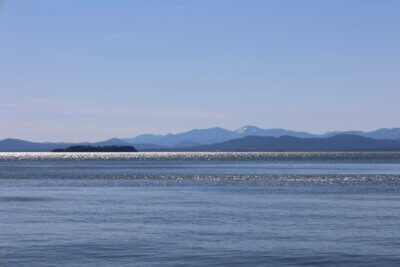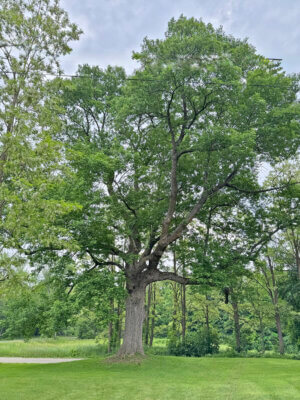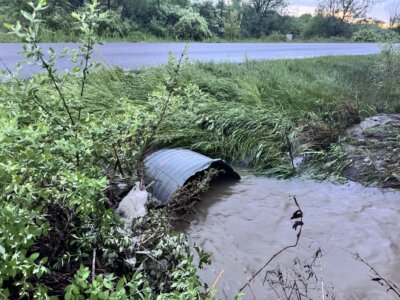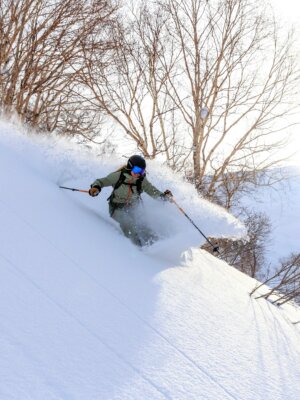A weird winter of dreaming for ice fishing to start
It has been a strange beginning for the winter. This past week we actually paddled our canoe out of the swamp where we had it lashed to a tree for our duck hunting season. There was virtually no ice. Mallards and a few geese were still using the unusually high water and roosting instead of migrating south as is normal.
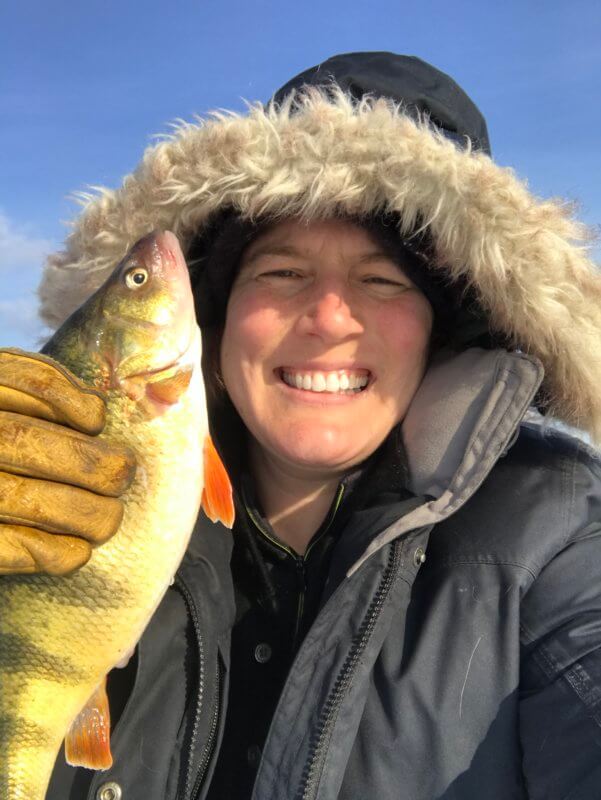
Katie Carleton holds up a large yellow perch — or a “slabber.”
With just a couple of cold nights this week, we are praying that the shallow bays in the islands up north lock up with some good clear black ice. So, this is how I imagine the scene playing out on Saturday: My band of merry souls will include my wife, Chris Thayer of Charlotte, Doug Hartwell of Vergennes and his gal, Jessica from Williston, maybe Ozzie (if his wife will let him out of the house) and our newest member, Trevor Coles of Manchester, N.H., who is studying pediatrics at University of Vermont Medical Center. We always send out the heaviest guy first. This year, I believe that will be Ozzie, with me in a close second, having managed to lose 36 pounds this fall — by accident.
So, we will prod Ozzie out first, dragging his shanty and an old wooden box with his gear. Ozzie likes old stuff. So do I. Maybe it’s just nice to use things that have been around long enough to have a sentimental relationship with old hand lines, nylon line and simple double hook set ups. Maybe it just feels good to know that just because you’re older, you haven’t lost your relevance or effectiveness.
I follow, tenuously, listening closely to the sounds of the ice. Not all cracking sounds are bad. When ice expands and thickens it makes these haunting sounds only describable as “sonic booms.” It takes several years to get used to. I have my hand spikes wrapped around my neck in case I have to pull myself back on to the surface after an arctic dip.
We head out on to the bay with a stunning sunrise behind us. In a line staying about 10 feet apart. Ozzie checks the thickness every few yards with the heavy iron spud, slamming it into the ice surface. If it does not go through, it’s likely safe. Using our Navionics app, we locate a shelf with a down to 12 feet and some kind of “structure” on the bottom. Fish like structure.
We set up in a circle and begin drilling holes. Some of us use the new cordless drills with our augers, and those with a respect for the authenticity of the humble beginnings of this sport, still use hand augers. There is a certain honor that goes with those who are still holding out on technology.
Back when I started ice fishing, Ozzie and I would drive my old 1977 Jeep CJ-7 out on the ice off Porter’s Point in Colchester. It was “customized” to allow us to sit in the cab with the heat on and the floorboards had stainless steel hinged doors that allowed us to fish directly underneath the Jeep.
We used wooden handlines with nylon line and a snap swivel leading to a piece of simple 2-pound rated monofilament with a sinker and a No. 2 hook. We would buy minnows from an old commercial fisherman who lived in a small house just across the road from the access.
Fast forward to today. We are using Vexilar sonar fish detectors, short ultra-sensitive ice rods with super thin tips, micro reels with ball bearings and drags that can be set for any size fish we might encounter. We have pullover shanties with bucket seats, propane heater/cookers, hundreds of colorful bibbits (lures) shaped like tears with holographic and iridescent paint. Personally, I like to catch fish, so I do use a lot of these technological advances, but every once in a while, Ozzie and I like to “go retro” and just enjoy the challenges of yesteryear.
We sit facing one another, staring intently at the tips of our rods and watching to see if the new fluorocarbon line moves across the 5-inch hole. The tension is palpable. Everyone wants to be the first to yell “one” and tease everyone else who is still jigging.
We are all in our own world. Every time one of us raises their arm, we quickly divert our gaze to see if they are setting a hook or just trying to tease us all. We all fall for the deceitful gesture the first few times and after a few too many tricks we stop paying attention to the ones who are intent on fooling us. And that is when it happens.
We’re all staring down the icy cylinders between our feet, when Katie, without saying a word, raises her rod up — with no dramatic flair at all — and begins to slowly reel in her line. None of us are paying attention this time. Her rod bends down, bowing toward the hole, and she begins quietly, steadily reeling up the line. No one notices. Katie says nothing.
One by one, each of us in the circle beings to notice that she is no longer looking down the hole. She sits up proudly on her pickle bucket and with a stinging grin on her face, encircled by a fur hood, holds up a large yellow perch we call a true “slabber.” With all of us now staring incredulously at her, she quietly says “one.”
(Bradley Carleton is the founder of Sacred Hunter, a non-profit that seeks to educate the public on the spiritual connection of man to nature through hunting, fishing and foraging. He can be reached by email.)
Related Stories
Popular Stories
If you enjoy The Charlotte News, please consider making a donation. Your gift will help us produce more stories like this. The majority of our budget comes from charitable contributions. Your gift helps sustain The Charlotte News, keeping it a free service for everyone in town. Thank you.
Andrew Zehner, Board Chair



